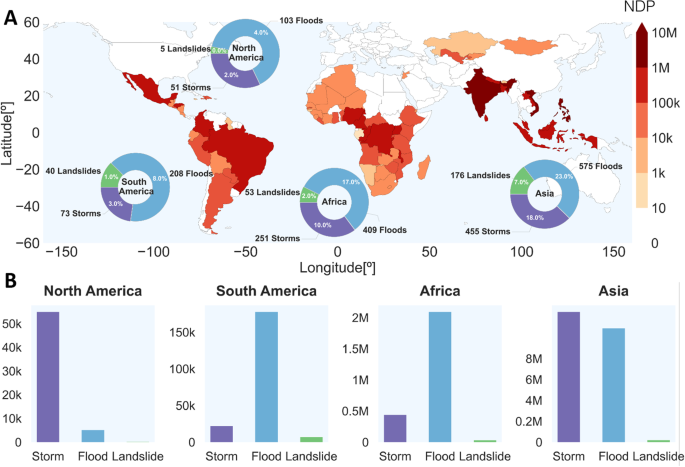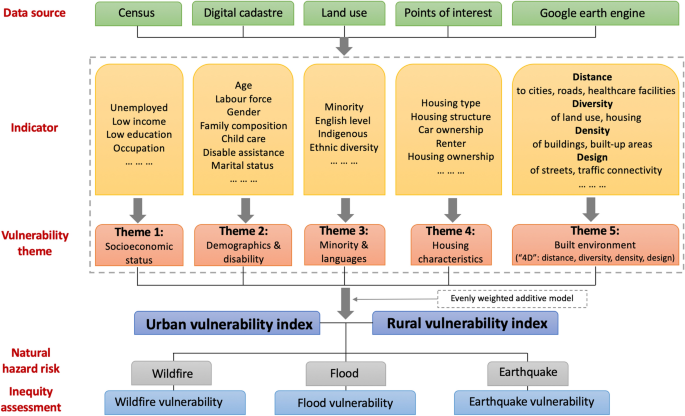Natural disasters significantly affect human settlements, altering their social, economic, and environmental dynamics. These changes manifest in various ways, from immediate impacts such as loss of life and property to long-term shifts in population, infrastructure resilience, and governance.
Economic Disruption and Increased Vulnerability

Natural disasters often lead to profound economic losses, destabilizing the livelihoods of communities. In a comprehensive study examining the effects of disasters across numerous countries, it was found that disaster risk correlates positively with human loss, indicating that heightened risks contribute to increased deaths, injuries, and affected populations[3]. Specifically, economic instability following disasters can exacerbate pre-existing inequalities within communities, leading to a notable increase in the socio-economic vulnerability of particularly marginalized groups.
The first source highlights that socio-environmental disasters like earthquakes disproportionately impact female-headed households, especially in rural areas. Households led by women often experience more significant economic strain, as these disasters aggravate existing disparities in access to resources and support systems.
Displacement and Migration Patterns

Disasters frequently result in internal displacement, reinforcing trends of migration. Research indicates that climate-related hazards can displace populations, with socioeconomic factors playing a crucial role in determining who is forced to leave their homes[2]. Displacement can change the demographic makeup of regions, strain infrastructure in receiving areas, and heighten competition for limited resources, which can further exacerbate social tensions[4].
A study of global displacement shows that regions with poor household conditions and high environmental vulnerability are especially susceptible to increased displacement during severe weather events[2]. Using machine learning to analyze data from 2016 to 2021, researchers found that socioeconomic conditions significantly influence the number of displaced people, revealing a complex interplay between environmental hazards and human vulnerability[2].
Infrastructure Resilience and Community Recovery

The ability of communities to recover from disasters depends significantly on the resilience of their infrastructure. Effective governance and leadership are critical in managing disaster response. Communities with investments in resilient infrastructure—like early warning systems and adaptive capabilities—are better equipped to handle disasters and recover more swiftly[5].
Moreover, the presence of robust social capital in communities can enhance collective resilience. Strong networks and local knowledge facilitate recovery efforts by ensuring that resources and information flow effectively during crises[5]. Community members' participation in leadership and decision-making processes further amplifies resilience, as these systems foster a sense of ownership and shared responsibility for disaster preparedness and recovery[5].
Social Inequalities and Risk Management

Natural disasters exacerbate social inequalities, particularly affecting vulnerable groups, including low-income populations and racial minorities. The dynamic between natural hazards and social vulnerability underscores the necessity for inclusive risk management strategies. It has been noted that in urban settings, vulnerability is often heightened in peri-urban areas, where socio-economic disadvantages are compounded by environmental risks[4].
Redefining vulnerability through multifaceted indices that include socioeconomic status, demographics, and environmental factors allows for a more comprehensive understanding of how disasters impact various communities. For instance, vulnerability assessments in Australia reveal that urban areas show greater inequality in vulnerability compared to rural counterparts, suggesting that urban planning must prioritize these inequities for more effective disaster risk management[4].
Importance of Preparedness and Adaptation Strategies

Effective disaster preparedness and sustainable development are interlinked. Communities that invest in education and public awareness about disaster risks are better positioned to mitigate the impacts of such events. Training and capacity-building initiatives enhance local capabilities, improving overall community resilience[5].
Additionally, adaptive policies that respond to changing climate conditions and incorporate local knowledge are crucial for fostering resilience[5]. These strategies should prioritize actions that address the needs of the most vulnerable, ensuring that recovery efforts are equitable and comprehensive.
Conclusion
Natural disasters profoundly affect human settlements, leading to economic disruption, increased vulnerability, population displacement, and altered social dynamics. Addressing these impacts requires a multifaceted approach that not only enhances disaster preparedness but also fosters resilience through effective governance, community involvement, and robust infrastructure. Furthermore, recognizing and mitigating the exacerbation of social inequalities is essential for equitable recovery and sustainable development in disaster-prone regions.
Get more accurate answers with Super Pandi, upload files, personalized discovery feed, save searches and contribute to the PandiPedia.
Let's look at alternatives:
- Modify the query.
- Start a new thread.
- Remove sources (if manually added).